How do snakes find nests of baby birds?
Do they smell them? Do they have superb sense of hearing?
Earlier this summer, while sweeping the porch and mindlessly daydreaming, I noticed a ruckus of chirping and scolding emanating from a nearby tree. My first thought was confirmed – it was the sound of unfortunate momma and poppa birds desperately trying to dissuade a black snake from eating their babies. The scolding, the divebombing – nothing seemed to bother the snake as he had his fill. Shortly afterwards, I came across him in the yard, satisfied and somewhat lumpy from his meal:
As Tennyson stated, “Nature is red in tooth and claw” and while it’s tempting to anthropomorphize the bird parents as bereft and the snake as evil, they’re both just doing what they can to survive and promote their species. Snakes gotta eat, and I wouldn’t be as upset if I discovered he’d eaten the mice trying to get into our camper, so who am I to judge?
But it did bring up a question – how did the snake find the baby birds? The nest was about 8 feet up in a tree. Did it smell them from far away? Could the snake hear their tiny chirps as mom and dad flew in to feed them?
We’ve encountered determined snakes at our house plenty of times in the past. This series of photos from a year or two ago tells a morbid story:
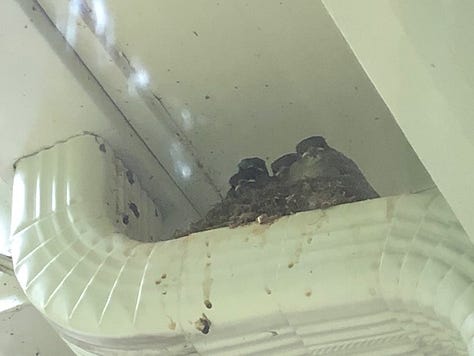
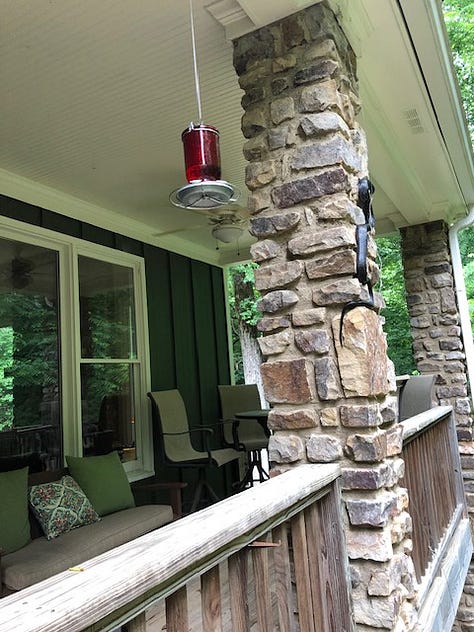
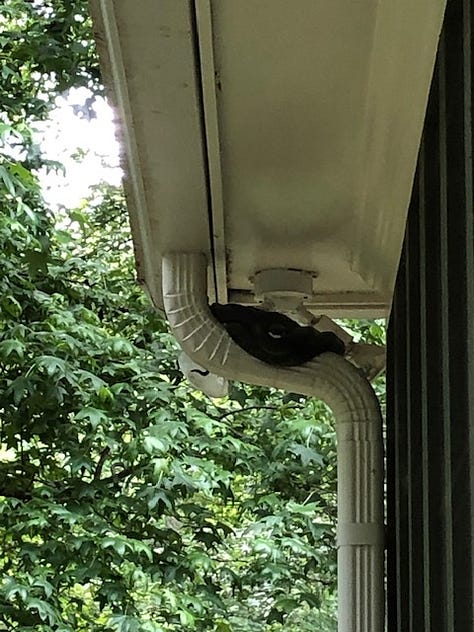
That nest was two stories up on the gutter – how did the snake know they were there?
How do snakes find nests of baby birds?
I went into the research for this question really thinking snakes must be able to smell those babies – Andrew has relocated black snakes multiple times when we’ve found them climbing up to nests, and they always come back unless he takes them about a half mile away. Surely, it’s their sense of smell that draws them that far? (Either that, or a really good sense of direction).
So, you can imagine my surprise when I found out that rat snakes (the leading predator for nestlings) find bird nests by WATCHING FOR THEM!
Snakes actually look for the increased flight patterns of parent birds as they fly back and forth constantly feeding their babies. Casual observers have seen black snakes watching birds as they fly back and forth, tracking the snake’s head movements as it followed the adult birds. One research project built nests at varying heights and then used a model bird to visit certain nests. The snakes only climbed to the visited nests, regardless of their not having nestlings or eggs inside.
Some snakes, it turns out, are very visual. Along with rat snakes, this includes Mambas, Cobras, and Garter snakes. As I’ve written about before, round pupils allow animals a wider field of vision and the ability to see movement at a distance. Snakes that lie in ambush mode (like copperheads) have vertical pupils to help with greater depth perception as they strike their prey.
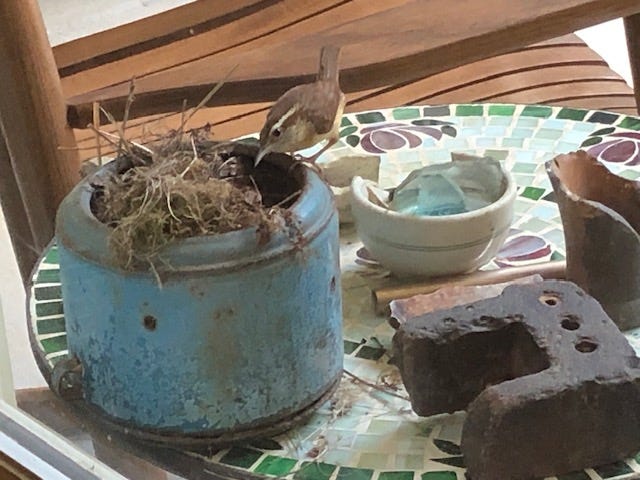
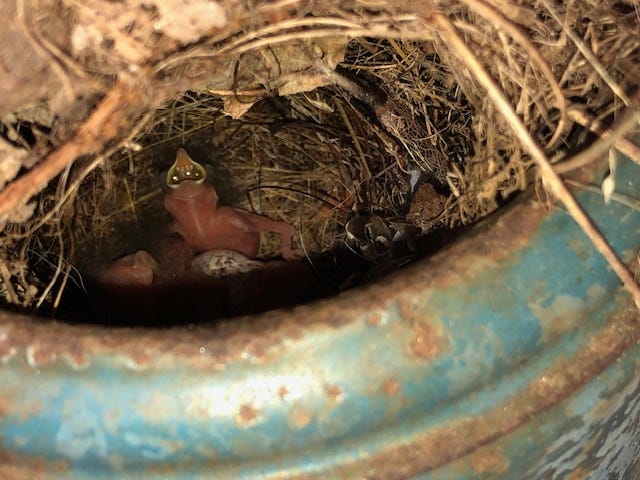
I guess I just assumed that all snakes, being close to the ground with small eyes, must see most of the world as blurry, Monet-like blobs of colors and instead rely mostly on their sense of smell or hearing. For many snakes, that’s true – all snakes use their nostrils to smell and if they encounter something interesting, they use their tongues to get a more detailed picture. The same goes for rat snakes – while their strong vision is what allows them to spot the potential for a nest, it’s their sense of smell as they creep close to the nest that confirms there are baby birds within.

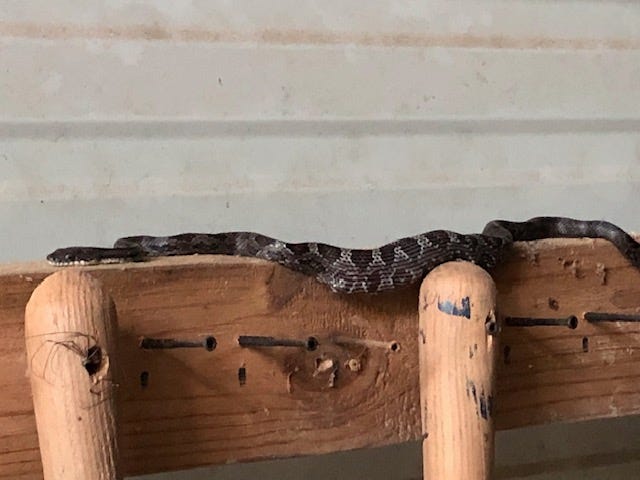
What about snakes’ sense of hearing? It turns out, that’s pretty good too. Research just published last year shows that snakes don’t only hear through vibrations in the ground, but can hear airborne sounds as well. The experiment showed that snakes tended to move away from airborne sounds played at 85 decibels, about the amplitude of a loud human voice.
Because they don’t have protruding ears, they don’t capture as much airborne sound or hear at as high a frequency as we do. But they do have the same internal ear structures as humans, and can hear very well at lower frequencies. Their high-frequency hearing tops out around 1,000 Hertz, however, and birdsong occurs between 1,000-8,000. So, snakes aren’t likely to appreciate a good bird melody or, for that matter, even hear when momma and papa bird are scolding them as they climb towards their nest.
I discovered that it was unusual to witness a snake attack in the daytime. Studies have shown that rat snakes usually wait until nighttime to attack the nest after spotting the flight patterns of the parent birds during the day. This is proof of premeditation and planning that some folks didn’t believe snakes capable of; but waiting until night means the parents defend the nest less vigorously and success is more likely.
Despite all the snake carnage I’ve shared with you, we do have a healthy songbird population at our house – many of our baby birds do survive! What about you – have you witnessed “nature red in tooth and claw”? Have you noticed a snake watching its prey?
Two days before posting this issue, Andrew and Toby and I just missed stepping on this copperhead while hiking – it was definitely watching us, but fortunately did not see us as its dinner and so did not strike…
Weird Nature:
(click to see these butterflies in action)

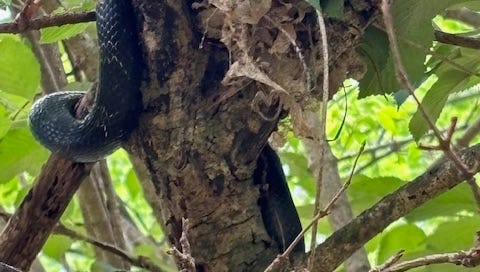



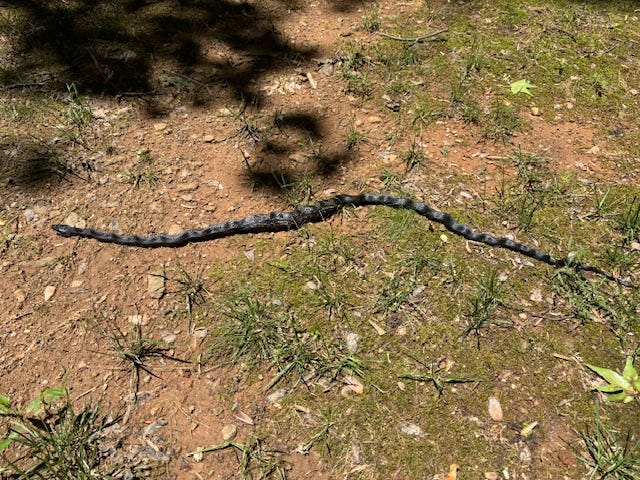



Thanks for sharing the dragon tail butterflies, wild!
I have twice pulled a black snake out of my bluebird house which is mounted on a piece of electrical conduit. I also once witnessed one attacking a nest in a maple tree. Every spring I usually hear mocking birds defending their nest but can't usually get high enough to see what's happening. I just assume it's a black snake feeding. Great article.